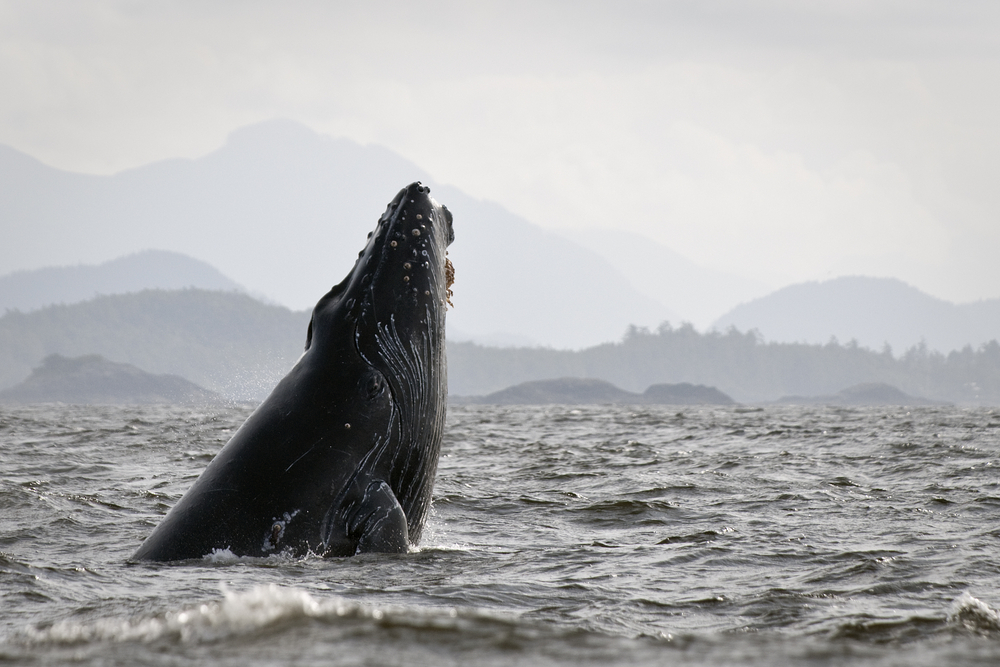
Definition: a primarily cetacean information-gathering behaviour involving rising vertically out of water.
Whales, dolphins and porpoises may spend most of their time submerged, but many love to poke their noses (and often much more) out of the water. These creatures, collectively known as cetaceans, do this in a variety of ways and not just to breathe. From humpback whales breaching the surface before crashing down with an almighty splash, to bottlenose dolphins bounding along besides boats, surfacing behaviour is something we all associate with these magnificent creatures.
Spyhopping is a less dramatic but still important activity. A spyhopping cetacean makes a controlled vertical rise out of the water while carefully treading water with its flippers. Why might they do this? The most likely explanation is a straightforward one – as curious, intelligent animals they simply want to know what’s going on. A study on bottlenose dolphins near South Italy noted that spyhopping increased greatly when boats approached their group. Very likely they were trying to gather information, working out whether the approaching vessel was friend, foe or a possible source of food. It’s not a particularly comfortable position for a creature adapted to a rather more horizontal arrangement so spyhops rarely last more than a minute. This is usually enough to get the information they need.
There’s a group of killer whales in the Antarctic that are particularly fond of spyhopping because they’ve found a special use for it: hunting. Their target prey are seals resting on floating ice floes. They may seem safe from underwater predators, but the orcas have developed a special strategy to get them. Working in teams, the killer whales spend some time spyhopping, carefully choosing their next victim. With a target acquired, they’ll turn round, get a ‘run-up’ and then swim right up to breach, tip or even smash through the ice floe. The disoriented seal rarely stands a chance.
Spyhopping isn’t entirely limited to cetaceans. Great white sharks do it to examine bait held above the surface, albeit not so impressively high and vertical. This is just one example of the intelligence concealed behind their cold black eyes.
Bonus Facts
- The behaviour of ‘bounding’ along the surface of the water while often associated with dolphins is actually called porpoising
- The researchers on the South Italy dolphin study reported that the repeated stress of close encounters with boats might be having long-term damaging effects on the dolphins. In the paper they called for increased regulation of how close boats can get to the dolphins.
